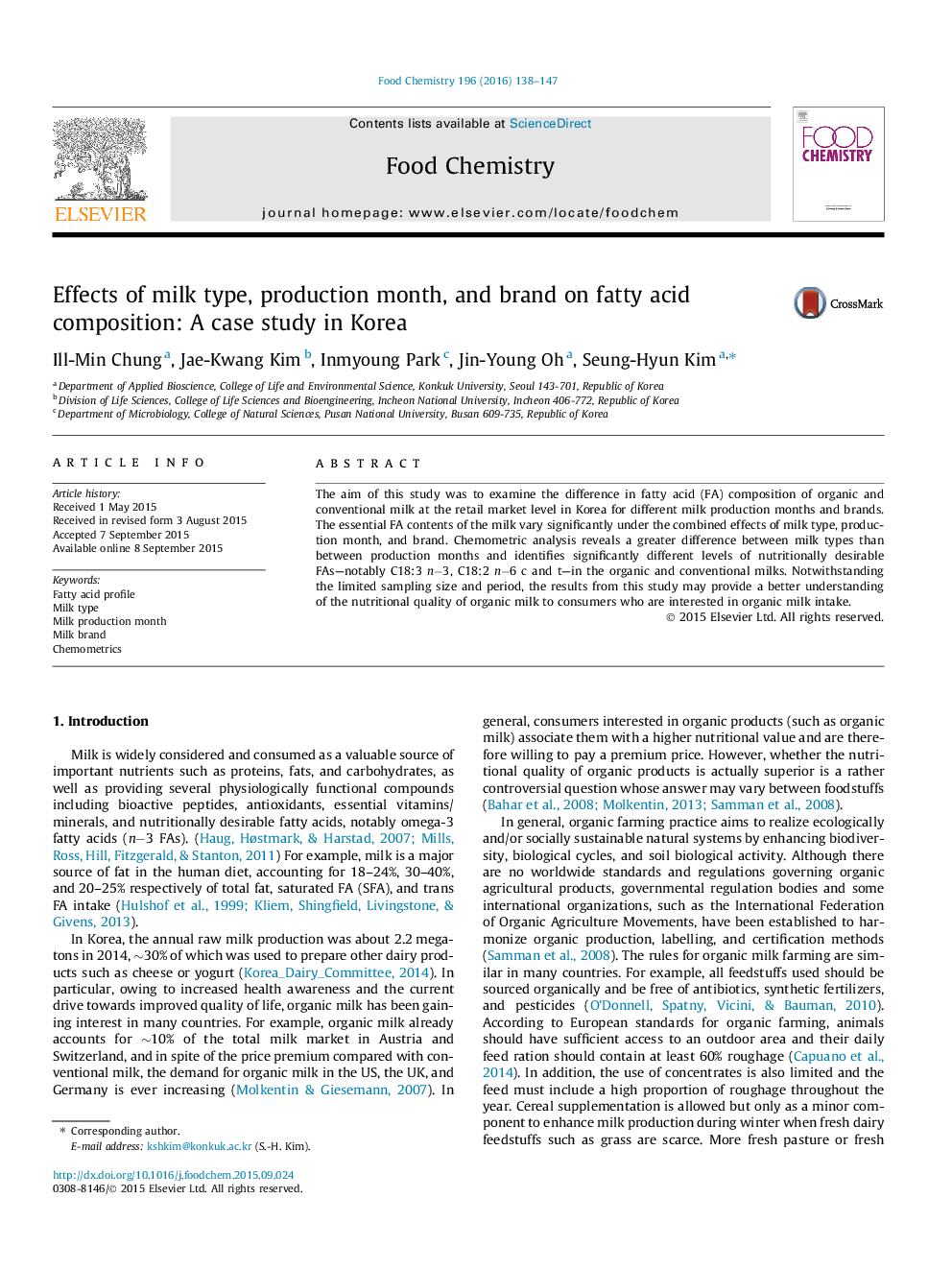| Article ID | Journal | Published Year | Pages | File Type |
|---|---|---|---|---|
| 1184136 | Food Chemistry | 2016 | 10 Pages |
•Conventional milk is richer in total FAs than organic milk.•Milk in July 2014 has a higher total FA content than that in May or June 2014.•PUFA/MUFA and n−3/n−6 FA ratio are respectively 40% and 26% higher in organic milk.•PLS-DA and FA profile provide a very good model to identify organic milk.•C18:3 n−3 is the most clear marker of organic milk brands by PLS-DA.
The aim of this study was to examine the difference in fatty acid (FA) composition of organic and conventional milk at the retail market level in Korea for different milk production months and brands. The essential FA contents of the milk vary significantly under the combined effects of milk type, production month, and brand. Chemometric analysis reveals a greater difference between milk types than between production months and identifies significantly different levels of nutritionally desirable FAs—notably C18:3 n−3, C18:2 n−6 c and t—in the organic and conventional milks. Notwithstanding the limited sampling size and period, the results from this study may provide a better understanding of the nutritional quality of organic milk to consumers who are interested in organic milk intake.
